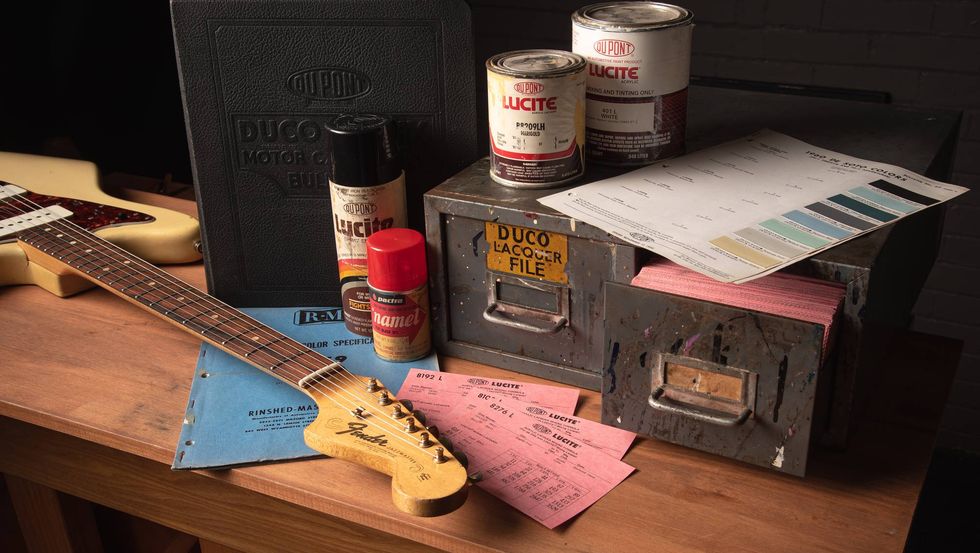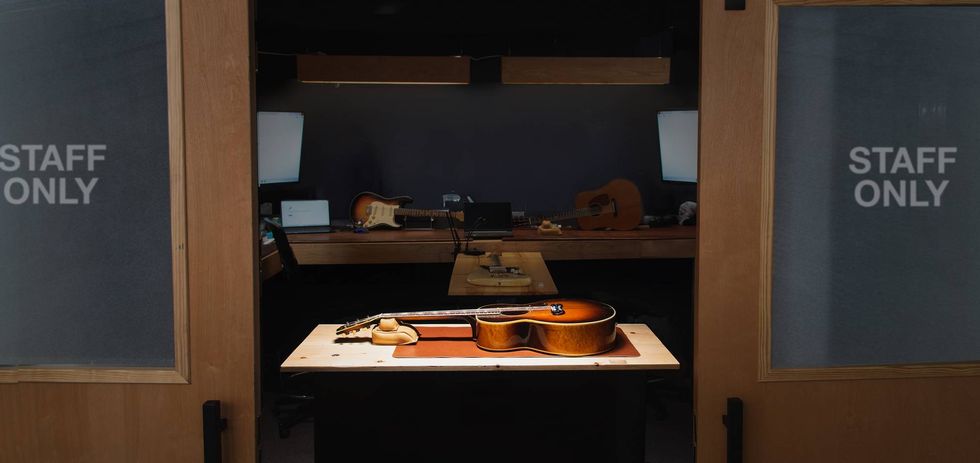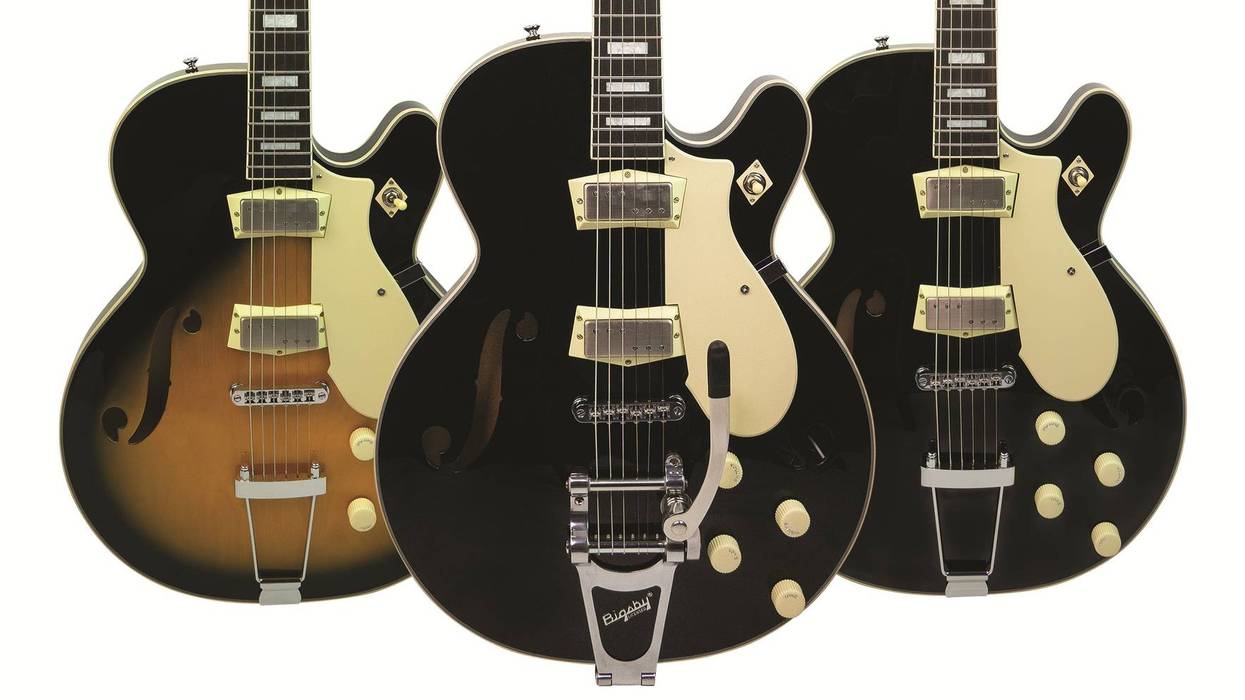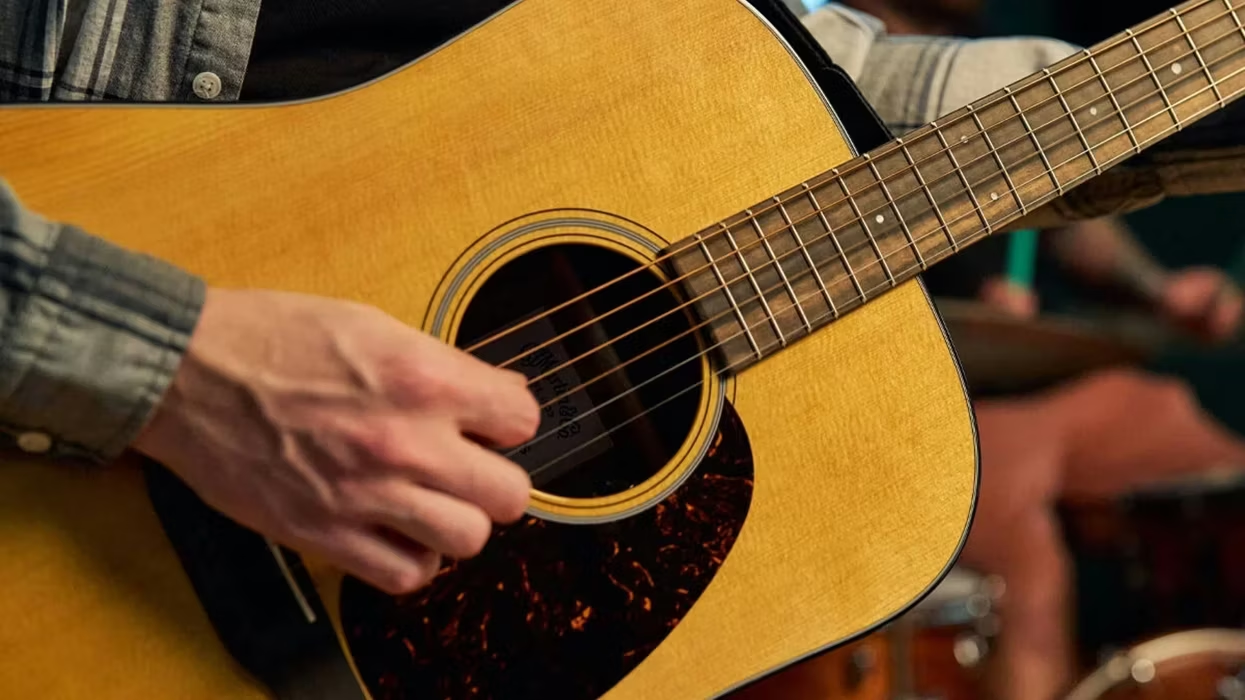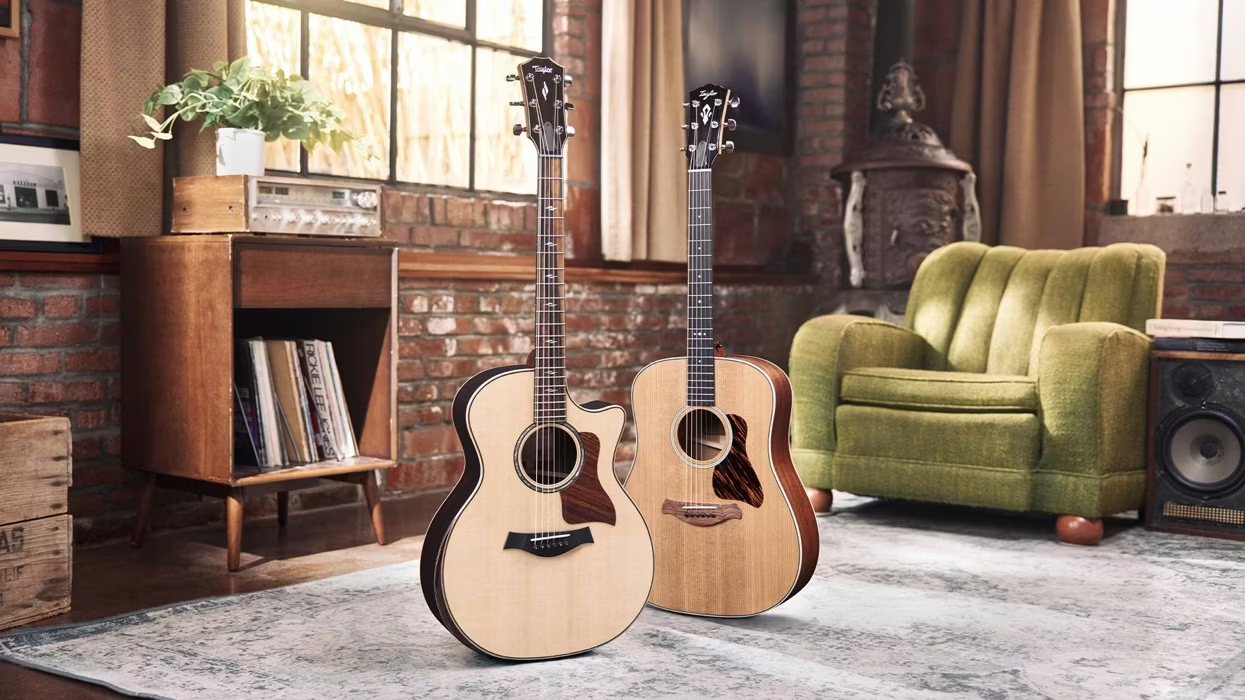Name: Mike Greene
Location: Warsaw, VirginiaGuitar: 2003 Squier Standard Stratocaster

Wouldn’t it be great to have your birth year guitar? For me, that’s 1963—and a 1963 Stratocaster would be out of my price range. So, I created my own “63,” in name only.
I found this guitar new as an open-box special online for $117, 14 years ago. A short time later, I bought and put in a set of GFS Premium Hot Alnico Stagger pickups, Fender 250k pots, and a Fender American 5-way switch. I searched the Fender website and found the wiring diagram to the Yngwie Malmsteen Stratocaster and put my tortoise pickguard together based on that.
I scalloped the six frets closest to the neck pickup, and playing leads in that area is fantastic. (I got the idea from Steve Vai—his playing is like pouring water.) I then shaved the sides of the neck to give it a worn-in feeling. From there, I polished the frets to a chrome finish, so it feels like you’re sliding on butter all the way down the neck. The headstock has a few coats of clear paint to improve its appearance and Dunlop strap locks hold down the strap. The latest update was adding a GFS brass trem block. My total invested in this guitar is $235. Squier Standard Stratocasters have sold for $249 for years and this one is killer.
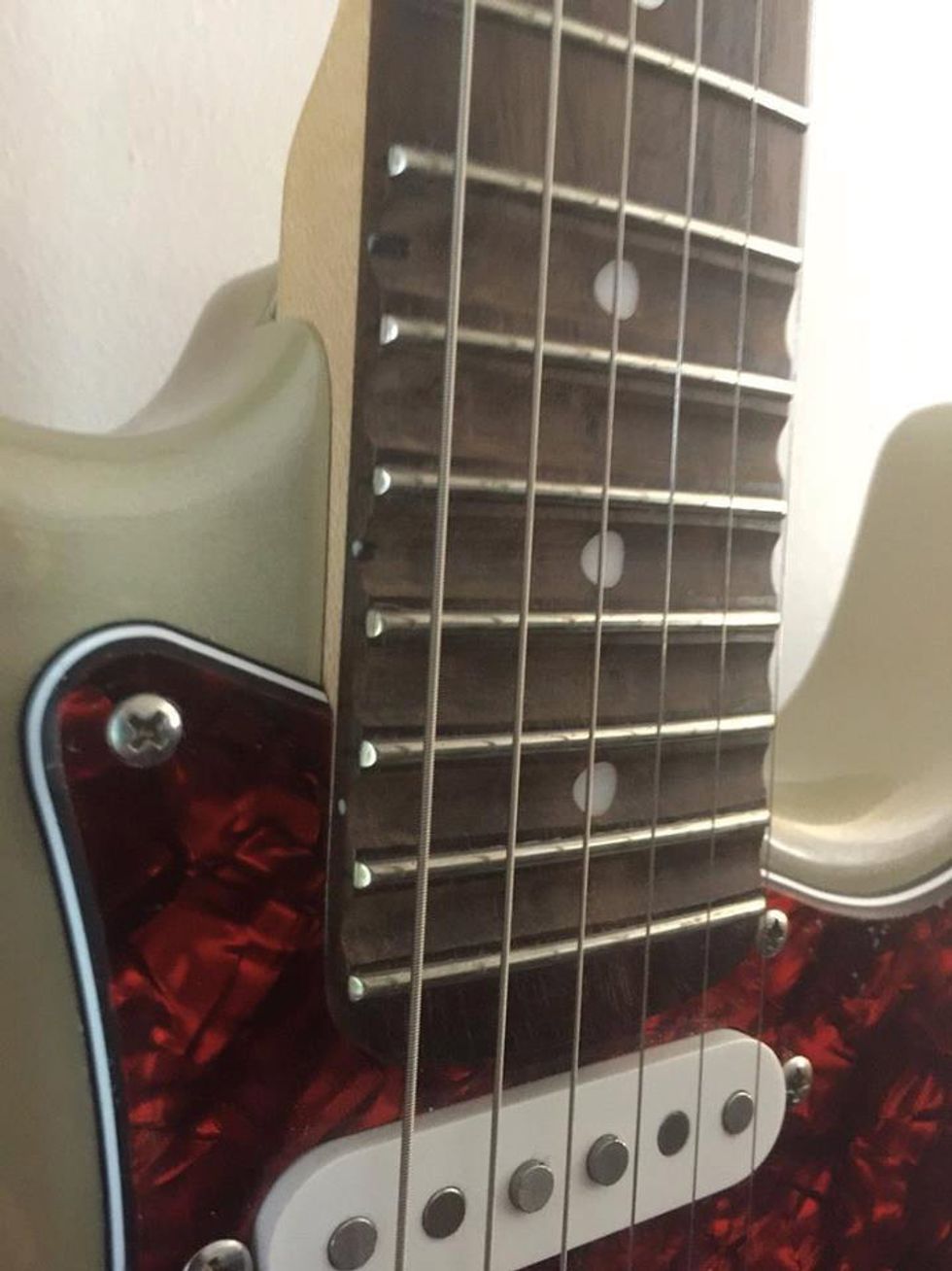
I started playing guitar late in life: not until I was 34. The guitar modification itch hit at the same time. I played lots of expensive guitars at stores and looked close to understand what made them feel and play a certain way.
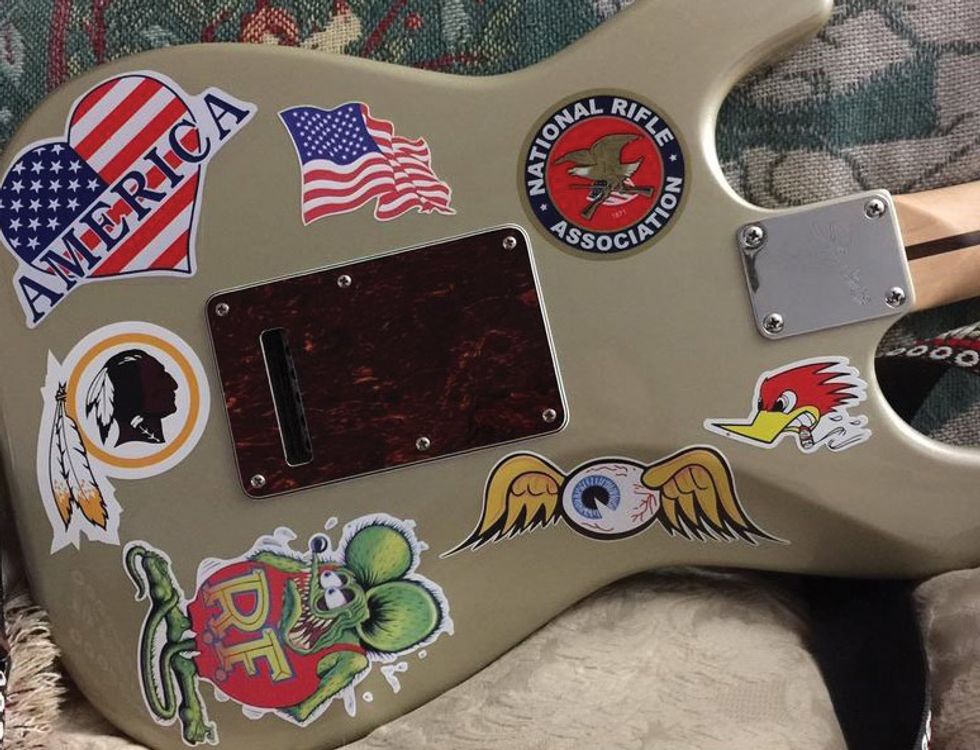
Then I read anything I could find to help get my own guitars to another level without breaking the bank. A big thanks to Dan Erlewine’s Guitar Player’s Repair Guide (second edition), which provided both knowledge and ideas and has paid for itself many times. And thank you, Premier Guitar, for providing space for readers’ guitars!
Send your guitar story to submissions@premierguitar.com.








